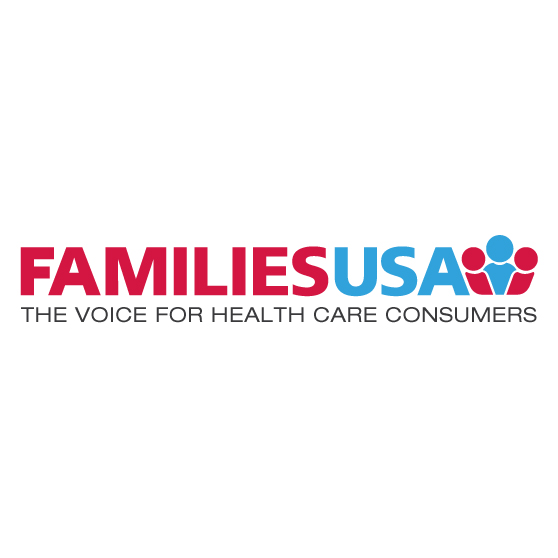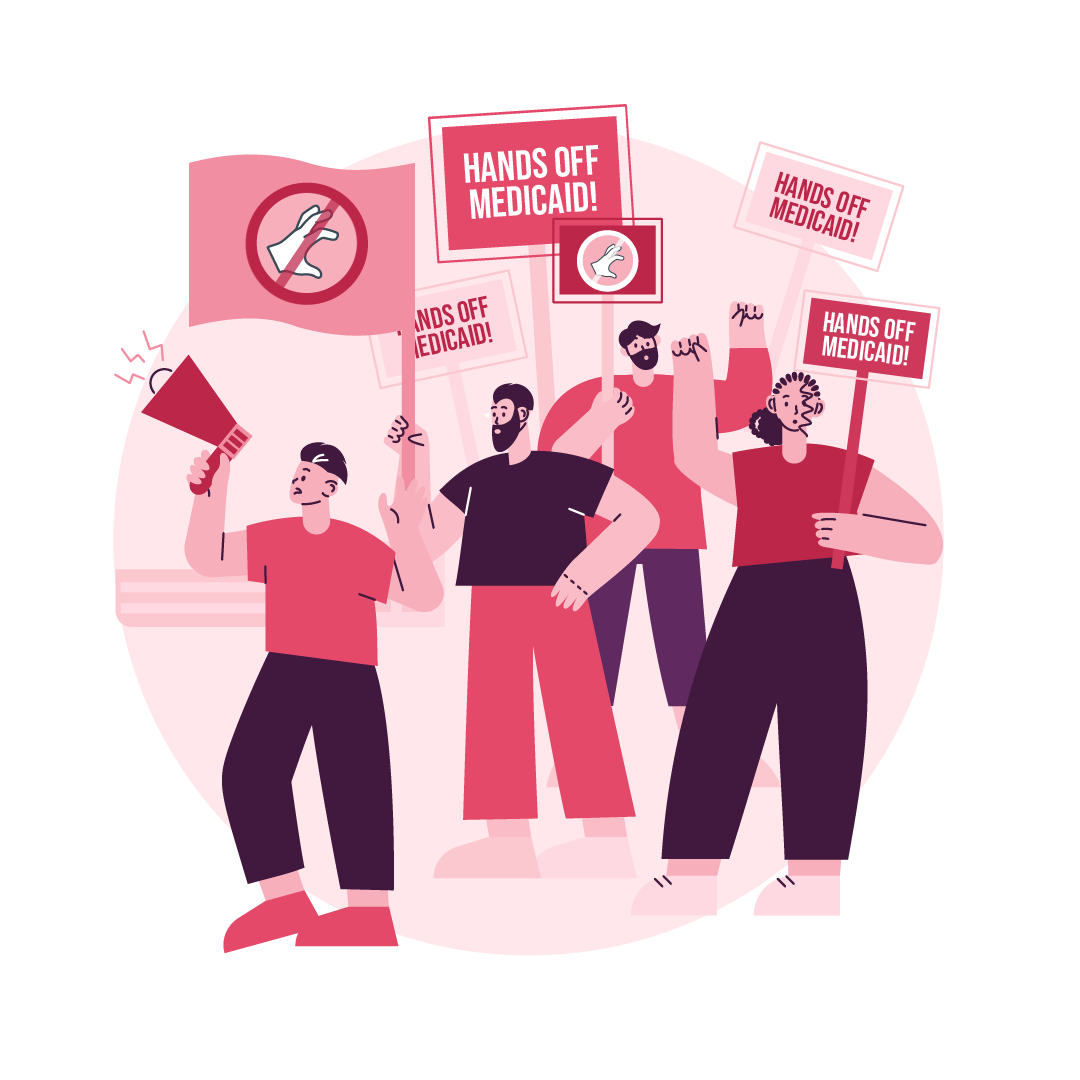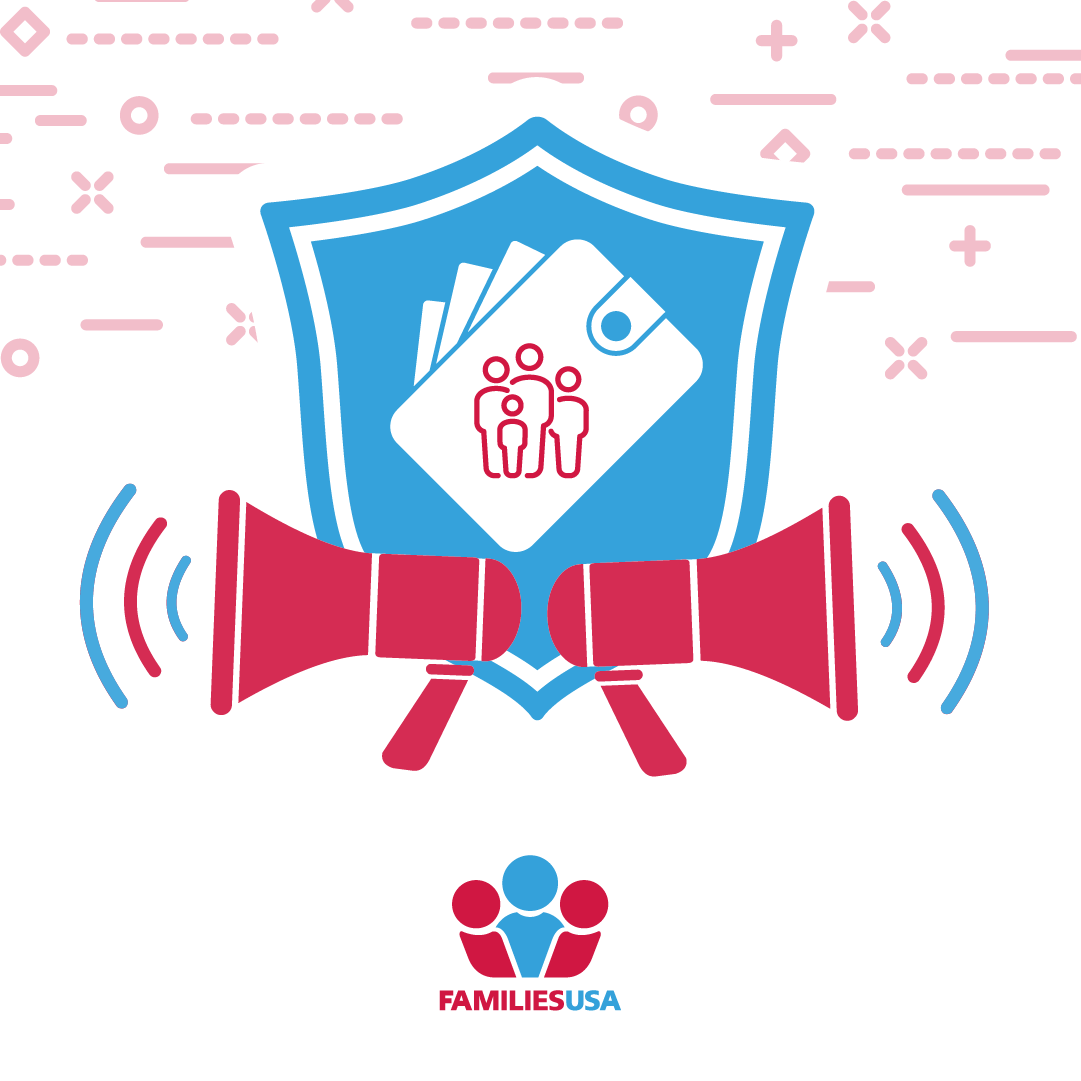Final “Public Charge” Rule Discriminates against Lawfully Present Immigrants and Visa Applicants, Harming Health
08.21.2019
The Department of Homeland Security (DHS) has published a final rule, scheduled to go into effect February 24, 2020, that takes direct aim at middle- and lower-income immigrants who are lawfully residing in the United States, or who seek visas to come to the U.S. Under the new rule, DHS will determine whether, given the “totality of circumstances,” people are “more likely than not” to receive certain public benefits over the course of their lifetime; if DHS finds that they are likely to receive those benefits, they may be denied lawful permanent residency or visas. The rule is harmful to the health of millions of families because it discourages them from using Medicaid benefits, and it’s harmful to the health care system, which will bear the brunt of lost revenue and uncompensated care.
In mid-August, at least four groups filed lawsuits to block the rule. A group of five states led by California Attorney General Xavier Becerra filed a lawsuit, as did a group of 13 states led by Washington Attorney General Bob Ferguson. One suit was filed by a coalition of non-profit organizations representing health care providers, farmworker justice programs, and other nonprofit programs serving immigrants, and another by the counties of San Francisco and Santa Clara in California. These suits include the following claims: The rule is contrary to the historical meaning of “public charge”; it is racially motivated against nonwhite immigrants; it will discourage eligible immigrants from obtaining benefits, including health care, to which they are entitled; it will harm states and counties by shifting health care costs to them and by harming their residents; and it will hamper the ability of safety net providers to care for low-income populations. In addition to health care, the rule also takes aim at people’s use of nutrition and housing programs, and it generally penalizes low-wage workers and their families. In January 2020, the Supreme Court lifted a preliminary injunction, allowing the rule to go into effect, but the litigation continues. This analysis focuses on the health care aspects of the rule.
The rule will directly affect people in all walks of life, including people who plan to work in the U.S. in jobs ranging from health care to temporary farmwork; citizens who seek to bring in a fiancé or family member from another country; foreign students; non-immigrants already in the U.S. who are extending their legal stays or adjusting their status to a different visa category or to become lawful permanent residents; and lawful permanent residents who have left the country for six months (for instance, to care for an elderly parent) when they seek reentry into the United States. Unlike many other recent Trump administration actions, this one is not aimed at refugees, unauthorized immigrants or even asylum seekers. Instead, it discriminates against other groups of immigrants that our nation has welcomed for decades, discouraging them from getting the care and benefits they need to be healthy. And the list above only includes those people directly affected by the rule. Even more families, including immigrants, are likely to avoid using health care because of the fear caused by the rule’s implementation.
Test Hinges on Harmful New Definition of “Public Charge”- Including Use of Medicaid
Under the new rule, DHS will determine whether, given the “totality of circumstances,” people are “more likely than not” to receive certain public benefits over the course of their lifetime. For decades, a “public charge” meant someone primarily dependent on the federal government for subsistence. Prior to this new rule, the only benefits considered in a public charge determination were cash assistance and institutional long-term care. Until now, people with incomes below the poverty level who still supported themselves through employment were not considered public charges.[1] But under the new rule, many working families are targeted because the public programs involved are designed to help low- and middle-income workers afford health care and other necessities. Public charge, under the new rule, is defined as receiving one or more of designated medical, food, housing, or income benefits for 12 months or more in the aggregate — and receiving two public benefits in one month is counted as two months of benefits. Under prior rules, only cash benefits and long-term care were counted in public charge determinations. Under the new rule, the following benefits will count after October 15, 2019:
- Cash assistance from state, local, or tribal governments, as well as federal Temporary Assistance for Needy Families (TANF) and Supplemental Security Income (SSI) benefits
- Most Medicaid for nonpregnant adults[2]
- Medicare Savings Program benefits[3]
- Supplemental Nutrition Assistance Program (SNAP, formerly called food stamps)
- Section 8 housing assistance
- Public housing
Medicaid is a benefit received by adults with income up to about 138% of the federal poverty line. The income limits are higher in some states and lower in others, and may vary within states for some groups of people. Medicaid helps low-wage workers get health care when their employers do not provide insurance. For example, home care workers and hourly construction workers often get Medicaid. Many elderly people rely on the Medicaid program to help pay Medicare premiums and coinsurance, including through the Medicare Savings Program. About one in five Medicare beneficiaries receive Medicaid. Medicaid can also wrap around job-based insurance, helping with premiums, high deductibles, and cost-sharing, similar to how health reimbursement accounts (HRAs), flexible spending accounts (FSAs), and health savings accounts (HSAs) help higher earners who have more money to set aside.
This singling out of Medicaid is not based in any policy justification — it is simply a way of punishing people with low incomes. Job-based health insurance, HRAs, FSAs, and HSAs are all tax-free benefits and thus subsidized by the federal government, as is Medicaid. In many other countries, health care is a benefit that all people expect the government to provide. Our country’s health coverage is based on a combination of job-based insurance, individually purchased insurance, tax breaks, and direct public coverage — and most people cycle through several types of insurance in their lifetimes. Medicaid is simply the part of our patchwork set of public health care subsidies that is designed and targeted for low-income people. Like all forms of health insurance, Medicaid is intended to help people get care when they need it so that health problems can be prevented, treated before they worsen, and contained before they spread to the public, and so that people can live as healthy and productive lives as possible.
Health Status Test Is Open Door for Prejudice
The rule gives DHS broad discretion to deny people immigration status based on a “totality of circumstances” that includes whether they have a medical condition or disability. To do this, the rule says, the department may consider any “(e)vidence of a medical condition that is likely to require extensive medical treatment or institutionalization or that will interfere with the alien’s ability to provide and care for himself or herself, to attend school, or to work upon admission or adjustment of status.” These factors weigh especially heavily against someone who does not have a prospect for getting private insurance without premium tax credits and does not have significant financial resources. But “likely” to require treatment and “interfere with” ability are loaded words that give immigration officials a mandate to discriminate against people with disabilities and/or medical issues. In finalizing the rule, the administration’s defenses only confirmed that it is discriminating against people with disabilities. The administration concedes that the new rule will likely have an “outsized impact” on applicants with disabilities — an almost word-for-word invocation of the “disparate impact” standard used in modern civil rights review of discriminatory regulations. The administration’s defense— that it “did not codify this final rule to discriminate against aliens based on age, race, gender, income, health, and social status . . . [r]ather, this rule is intended to better ensure that aliens subject to this rule are self-sufficient” – is no defense against the “disparate impact” civil rights standard, which is explicitly intended to put aside claims of neutral intent to look at the discriminatory impact of the regulation.
Not only is this regulatory language a mandate for discrimination, it is also a mandate for weakening rather than strengthening our economy and our society. Imagine a student who has a temporary mental health crisis. A U.S. citizen might take a few months off to recover before returning to school, perhaps with medication and therapy, and then flourish. In contrast, under the new test, if a foreign student went home for a few months, immigration officials might deny that student reentry based on the existence of a medical condition. People can recover from medical conditions or learn to manage them, and people with disabilities can and do succeed at work, at school, and in their communities in ways that other people may have thought would be impossible. But whether a given individual’s abilities are taken into consideration will be left entirely to the discretion of immigration officials who are being asked to forecast the future.
The rule also discriminates against middle-income people who buy insurance on the marketplace when their employers don’t provide affordable health insurance. Under the “totality of circumstances” test if someone has a medical condition that might be expensive, but they have private insurance provided by an employer, DHS can use this as a “heavily weighted” mitigating factor in determining whether the person might become a public charge. However, if the person has private insurance that they have purchased individually through a health care marketplace and they receive premium tax credits – which are available to lawful residents with incomes up to 400% of the federal poverty-level ($83,120 for a family of three) — this will not be considered such a mitigating factor. At all income levels, the proportion of the nonelderly population with employer-sponsored health insurance has fallen over the last 10 years. More and more people are independently employed, and the totality of circumstances test does not take this into account.
Public Charge Bonds Will Not Help People Get Health Care
In order to avoid likely use of Medicaid or other public benefits counting against a person in a public charge determination, DHS may in its discretion allow, the person to buy a new type of bond — a public charge bond. The rule sets the minimum bond amount at $8,100. However, such bonds are only available to people who do not have any heavily weighted negative factors set forth in the rule, which include being diagnosed with a medical condition and being uninsured without the prospect of obtaining private insurance or paying out of pocket for medical costs. There is no maximum, so people may be pushed to buy bonds that are much more expensive. The rule estimates that bonds may cost 15% of their value. A bond does not help anyone get health care though — it just pays the government if immigrants use a public benefit. It is an added expense that only some immigrants will be able to afford in order to secure their immigration status. Furthermore, DHS can determine that an applicant should be denied an immigration status and not offered a bond at all.
Fearmongering Effect of the Rule
Besides the rule’s direct effect on many people seeking or extending visas or adjusting their immigration status, confusion about the rule will scare immigrant families away from using benefits to which they are entitled. An Urban Institute study conducted in December 2018 showed that one in seven adults in immigrant families were already avoiding public benefit programs out of fear that use would jeopardize their future immigration status.
There are myriad immigration statuses, and many are unaffected by this rule. For example, the rule does not apply to refugees, asylees, people in active duty in the armed forces, people who are already lawful permanent residents (unless they are returning to the country after an extended stay abroad), victims of domestic trafficking, and several other categories. It does not apply to children’s use of Medicaid or the Children’s Health Insurance Program (although children’s use of other critical benefits, like the Supplemental Nutrition Assistance program, or SNAP, does count toward public charge). It does not apply to receipt of health benefits by pregnant women. It does not apply to benefits, other than cash assistance and long term care, which people used prior to October 15, 2019.
Fully understanding the new rules and educating the public about who can and cannot use benefits without fear will be a major task. Materials to do so will be posted on the Protecting Immigrant Families website. In addition to sharing these materials with the public, advocates should find out what their states are doing to educate eligibility workers and to encourage people who can apply for benefits without fear to do so.
The public charge rule unfairly targets low- and middle-income immigrants and people with disabilities. The good news is that advocates are challenging the rule in court, and certain members of Congress are discussing halting its implementation. In the meantime, it is in all of our interests to push back against this rule so that our nation will be healthy.
[1] 3 U.S. Dep’t of Justice, Final Rule: Adjustment of Status for Certain Aliens, 54 FR 29442-01 (July 12, 1989), codified in relevant part at 8 C.F.R. §§ 245a.2(k)(4), 245a.3(g)(4)(iii), 245a.4(b)(1)(iv)(C).
[2] Emergency Medicaid, Medicaid for pregnant and postpartum women, and Medicaid for children and the Children’s Health Insurance Program do not count.)
[3] This assistance with Medicare premiums and cost-sharing is provided through Medicaid.




